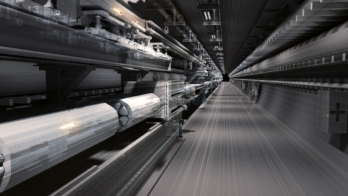
On 19 June, the Nuclear Physics European Collaboration Committee (NuPECC) released its long-range plan for nuclear research in Europe, following 20 months of work involving extensive discussions with the scientific community. The previous long-range plan was issued in 2010.
Today, nuclear physics is a broad field covering nuclear matter in all its forms and exploring their possible applications. It encompasses the origin and evolution of the universe, such as the quark deconfinement at the Big Bang, the physics of neutron stars and nucleosynthesis, and addresses open questions in nuclear structure, among other topics.
A number of research programmes are at the interface between nuclear and particle physics, where CERN plays an important role. This can be seen clearly in the six chapters of the NuPECC report devoted to: hadron physics; properties of strongly interacting matter; nuclear structure and dynamics; nuclear astrophysics; symmetries and fundamental interactions; and applications. For symmetries and fundamental interactions, particular emphasis is given to experiments (such as those with antihydrogen) where nuclei are sensitive to physics beyond the Standard Model. Concerning broader societal benefits, CERN’s MEDICIS facility, based on expertise from ISOLDE, is of particular interest (CERN Courier October 2016 p28).
The Facility for Antiproton and Ion Research (FAIR), a major investment that just entered construction in Germany (CERN Courier July/August 2017 p41), also has high prominence. Three other prominent recommendations have particular relevance to CERN: support for world-leading isotope-separation facilities (ISOLDE at CERN together with SPIRAL2 in France and SPES in Italy); support for existing and emerging facilities (including the new ELENA synchrotron at CERN’s Antiproton Decelerator); and support for the LHC’s heavy-ion programme, in particular ALICE. Emerging facilities – the extreme-light source ELI-NP in Bucharest, and NICA and a superheavy element factory in Dubna – are also highlighted.
Research in nuclear physics involves several facilities of different sizes that produce complementary scientific results, and in Europe they are well co-ordinated. International collaborations beyond Europe, mainly in the US (JLAB in particular) and in Asia (Japan in particular), add much value to this field.
NuPECC’s latest report is expected to help co-ordinate and guide this rich field of physics for the next 6–7 years. Its recommendations were extensively discussed and can be read in full at nupecc.org/pub/lrp2017.pdf.





